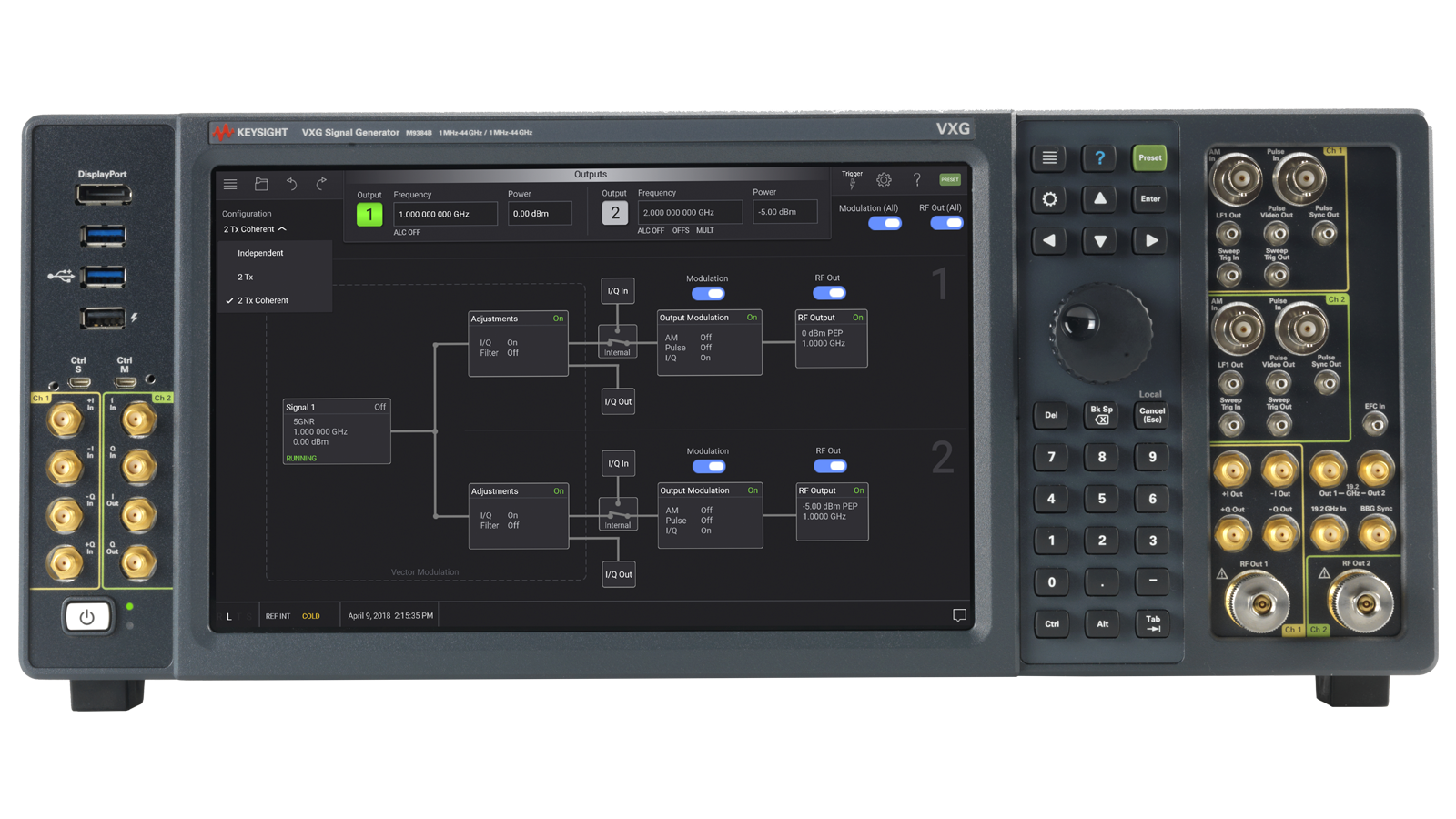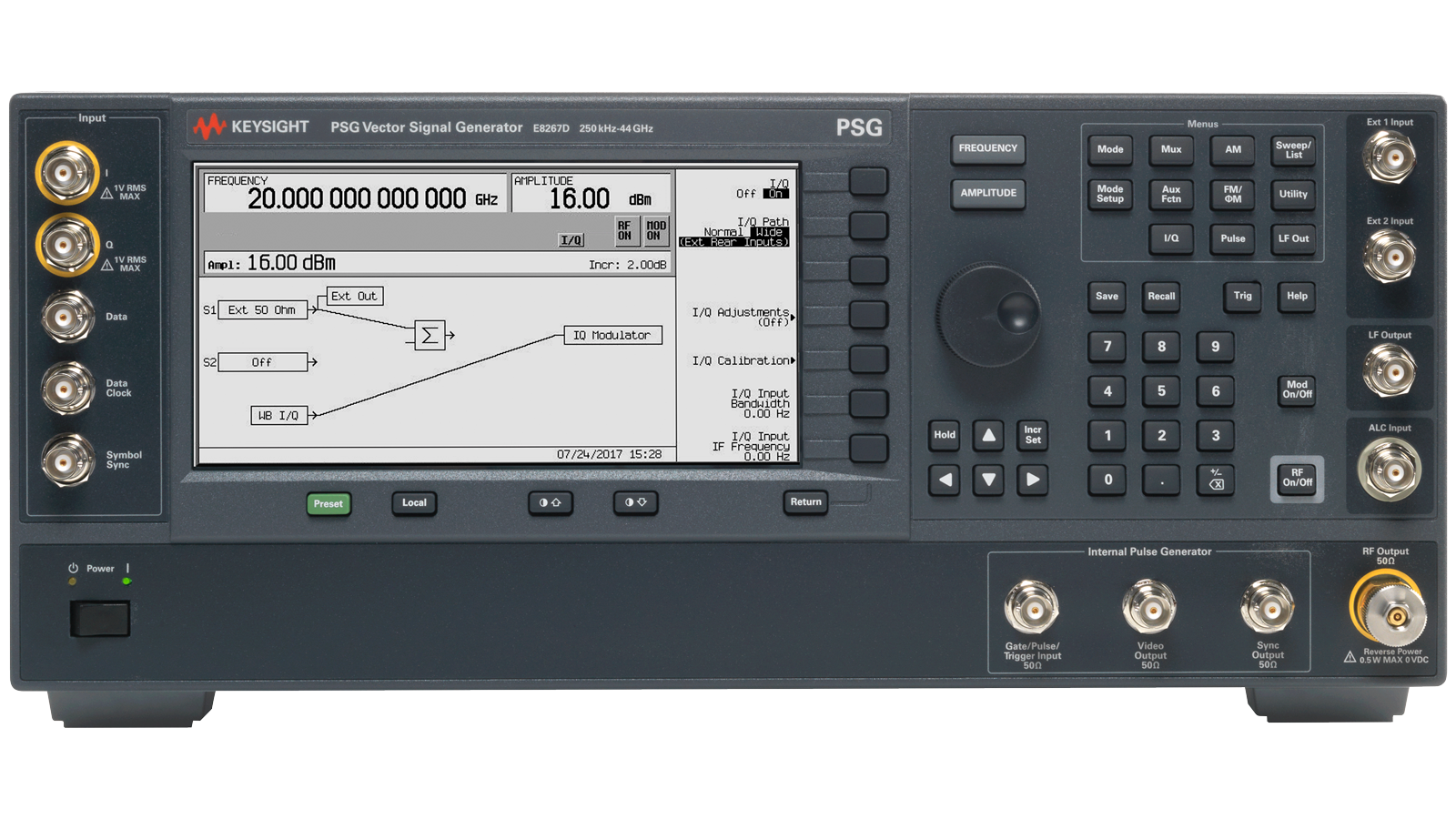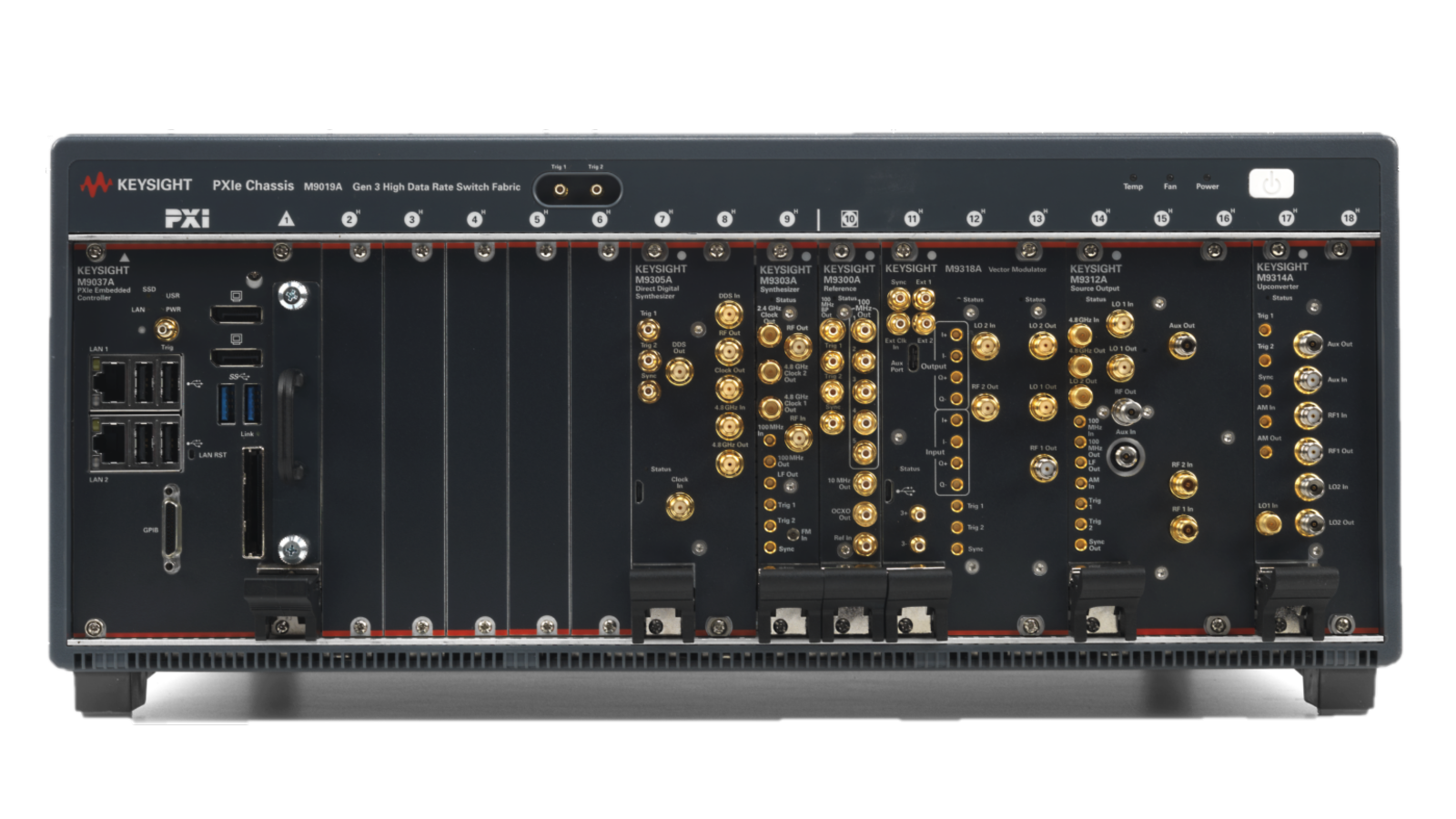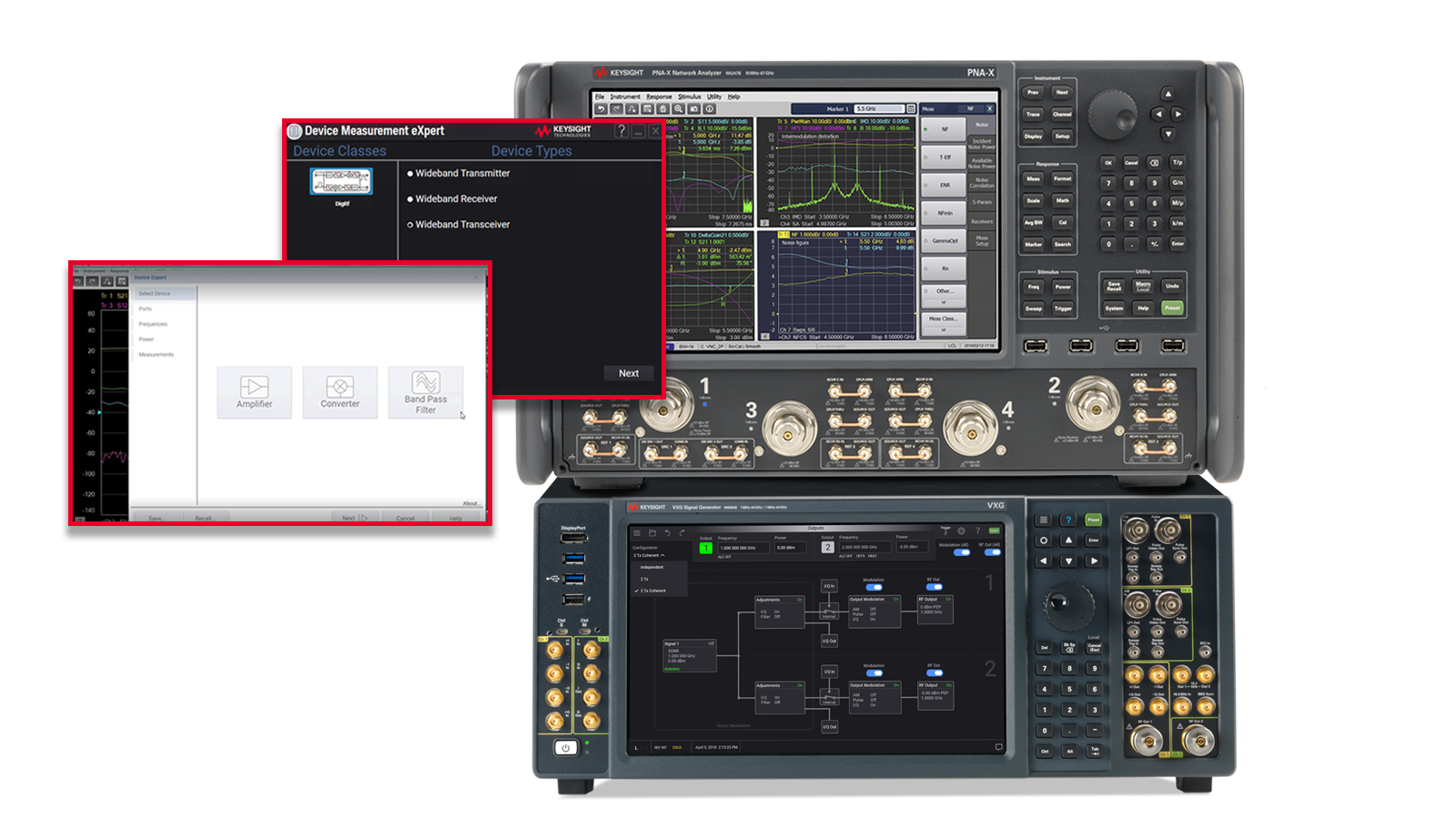What are you looking for?
Signal Generators and Signal Sources
Push your device and system within and beyond its limits

Save 20% on Eligible Signal Generators
Perform receiver testing using a signal generator with up to 6 GHz frequency coverage as your golden transmitter.
Save on the N5186A Signal Generator
Get up to 20% off a four-channel signal generator ideal for wideband multichannel applications.
Signal Generators with Unmatched Purity and Precision
Whether you are working on general-purpose or industry-specific applications such as 5G, automotive, or aerospace and defense, our signal generator platforms enable you to:
- Meet your test requirements with the widest selection of signal generators-from essential signal generation to traceable, metrology-grade solutions
- Stimulate your device and system using realistic signals with the highest signal integrity
- Lower your cost of ownership with long calibration cycles and the most comprehensive solutions for self-maintenance
Find the Signal Source That's Right For You
We offer the widest selection of signal generators from baseband to 110 GHz, with frequency extensions to 1.1 THz. From basic to advanced functionality, each signal generator delivers benchmark performance in its class.
PathWave Signal Generator Software
PathWave Signal Generator software is a flexible suite of signal-creation tools that will reduce time spent on signal simulation. Its performance-optimized reference signals, validated by Keysight, enhance the characterization and verification of your devices.
- Create performance-optimized reference signals
- Validate component, transmitter, and receiver testing
- Ensure designs meet the latest standards
- Speed signal creation and reduce simulation time
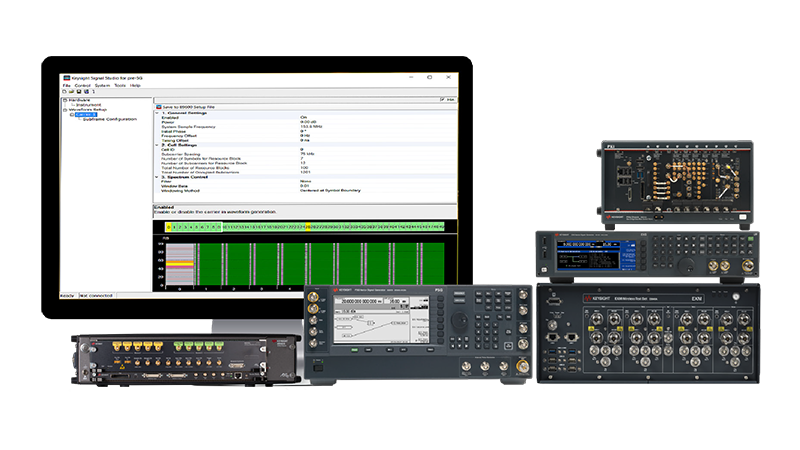

Eliminate Uncertainties From Your Test Results with a Reliable Signal Source
In the race to get to market faster, you need test results you can trust. Selecting the right, reliable instrument for the job can make a difference.
A Keysight test expert describes the fundamentals of signal generators in the white paper, below. It will help you make an informed choice when selecting your next RF source.
Related use cases
Extend Your Signal Generator Capabilities With The Right Tools
Get more functionality out of your test instrument today by pairing it with the right accessories to improve productivity and the right Keysight PathWave design and test automation software to accelerate your product development.
Featured Resources
Frequently Asked Questions – Signal Generators
Engineers use a signal generator to create repeated waveforms to design, test, and manufacture systems and individual components. A signal generator is a generic term for a wider family of instruments. Other common names are signal sources, sources, and sig gens.
Learn about signal generator specifications in our blog Learn the Basics of Signal Generator Accuracy
There are various types of signal generators:
- Analog Signal Generator
- Vector Signal Generator
- Arbitrary Waveform Generator
- Radio Frequency (RF) Signal Generator
- Function Generator
- Pulse Generator
- Digital Pattern Generator
RF signal generators create the waveforms needed for testing applications that use radio frequencies. One type of RF signal generator is an analog signal generator (ASG), that creates amplitude modulated (AM), frequency modulated (FM), phase modulation, and pulse modulation signals. As signal modulation becomes more complex, you need a vector signal generator (VSG) to create intricate digital signals. Popular modulation formats for vector signal generators are quadrature phase shift keying (QPSK), quadrature amplitude modulation (QAM), and binary phase shift keying (BPSK).
Signal generators are great instruments to use for evaluating applications that rely on radio frequencies to operate. Some examples in use daily are Global Navigation Satellite Systems (GNSS), 5G, avionics, and radar. They also give the flexibility of testing for real-world impairments and receiver fading.
Want help or have questions?




